Breeding and conservation of Japanese golden eagles (Aquila Chrysaetos Japonica) at zoos.
Tama Zoological Park
Yoshinori Kojima
Current status of the Japanese golden eagle
The golden eagle is widely distributed in grasslands of the Northern Hemisphere and is currently classified into six subspecies, with the subspecies that is distributed in Japan and the Korean Peninsula referred to as the Japanese golden eagle (Aquila chrysaetos japonica).
The Japanese golden eagle, which inhabits the mountainous areas of Japan, is one of the largest birds of prey in Japan, with a full wingspan of 2 m, and it has a vast home range with hunting grounds and nesting sites as well as prey such as the Japanese hare, copper pheasant, and snakes. They mainly nest in ledges and lay two eggs from January to March. Eggs usually hatch in 40–44 days, but in most cases, sibling conflicts prevent the brooding of chicks born later, and only the first-born chick can grow.
The estimated population of Japanese golden eagles in Japan is 500–650, and the species is threatened with extinction. The species was designated a natural monument in Showa 40 (1965) and as a nationally rare species of wild fauna/flora in Heisei 5 (1993), but its breeding success rate has declined significantly since the 1990s, and a protection and breeding project plan was formulated in Heisei 8 (1996) by the Ministry of the Environment and the Ministry of Agriculture, Forestry and Fisheries of Japan. By the 2000s, even breeding pairs themselves began to decline in number. The decline in breeding rates and sharp decreases in the number of individual Japanese golden eagles have been thought to be due to factors such as worsening habitat environment due to development and a decrease in prey animal populations; recent surveys have indicated factors such as decreased logging areas due to insufficient maintenance of artificial forests as well as the decrease in grazing land and pasture resulting in decreased open land that can serve as hunting grounds.
Captive Breeding in Zoos
In zoos, the pedigree registration of the Japanese golden eagle was initiated with its designation as a domestic pedigree registration species by the Species Conservation Committee in 1991. However, when the protection and breeding project was formulated in 1996, there were only 14 Japanese golden eagles in captivity across six zoos, mainly consisting of individuals protected in the country. There were only three cases of captive breeding (one case of artificial hatching in Yagiyama, Sendai City, in 1989; and two cases of natural hatching in Maruyama, Sapporo City, in 1990 and 1995), after which there was no sustained breeding, and Japanese golden eagles were at risk of disappearing even from zoos in the future.
Birds of prey are extremely vigilant, and breeding them in zoos requires a safe and secure captive environment that is suited for the species. Exhibits and breeding can conflict with each other depending on the facility, and the current status was such that there were few cases of breeding birds of prey in captivity.
Our zoo has a track record of breeding the white-tailed eagle for three generations, and given the critical situation faced by the Japanese golden eagle, we received certification for a conservation and breeding project in 1996 with the objective of establishing breeding techniques and forming captive populations. With this, we introduce two individuals from the Niigata Aicho Center and one individual from Omoriyama Zoo in Akita in addition to the one individual in our zoo (Fig.1) in order to begin the breeding of the Japanese golden eagle in earnest.

Fig.1 Japanese golden eagle in Tama Zoological Park (male breeding pair)
The presence of a nesting environment that is suited for specific species is important in a breeding facility for birds of prey. Darkness is an important element for condors that breed in caves, and species like the Andean condor and turkey vulture have been successfully bred with the installation of nest boxes that imitate caves. The white-tailed eagle is a sea eagle that nests on large trees in open areas along rivers and coasts, so we bred them using a 6-m-heigh artificial tree nest stand in a large flight facility. The Japanese golden eagle nests on a rock ledge on a steep cliff in mountainous areas, so it is more sensitive and vigilant. Therefore, we installed nests with the back and sides shielded with walls and sheets to create an impression of a rock ledge, and set the environment so that it would not be exposed to its surroundings, such as by enclosing the nest with logs (Fig.2).
As a result, in 1998, two pairs successfully bred, and we were able to breed the species in a stable manner in every subsequent year (Fig. 3). By 2004, a total of 14 chicks had fledged, and by 2005, a second-generation pair that formed from the offspring of two pairs that were bred, which was a major step toward successive breeding. Furthermore, the individuals that were bred at our zoo were transferred to Omoriyama Zoo in Akita, where they successfully bred in 2003 as a new pair. Afterwards, the number of individuals and breeding centers were increased, and at present (end of 2017), there are 48 captive Japanese golden eagles spread across nine zoos.
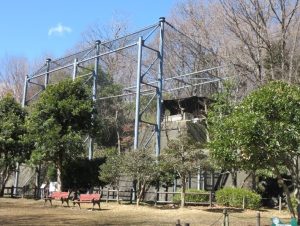
Fig.2 Breeding facility for Japanese golden eagles in Tama Zoological Park
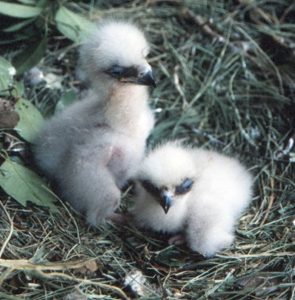
Fig.3 Four-day-old (left) and one-day-old (right) chicks bred at Tama Zoological Park
System for cooperation with protection and breeding project
The golden eagle conservation and breeding project mainly consists of (1) monitoring habitat and breeding conditions, (2) repairing of nests in breeding areas with poor breeding conditions and the improvement of nesting environments through the installation of artificial nest stands, (3) transfer of eggs and chicks, and (4) breeding in captivity.
The project component of the transfer of eggs and chicks involves protecting the second chicks or eggs that are unable to grow from pairs in the wild with high breeding success rates and replacing/transferring them with eggs of pairs that do not breed. This requires several conditions to be satisfied, such as the destination pair not hatching any eggs, the scheduled hatching dates of the source pair and destination pair being close to each other, and securing/transporting the second chick or egg without interfering with the breeding of the source pair. At the time, this project was started mainly by the Japanese Society for Preservation of Birds and the Society for Research of Golden Eagle Japan after being commissioned by the Ministry of the Environment of Japan.
From 1997, the Japanese Association of Zoos and Aquariums Species Conservation Committee Bird of Prey Breeding Review Subcommittee collaborate with the project. Following this, in 2000, our zoo’s pair became a candidate for providing second chicks, and our full-scale cooperation began along with other captive centers of the Japanese golden eagle (i.e., Yagiyama Zoological Park, Omoriyama Zoo in Akita, and Maruyama Zoo in Sapporo City). In 2002, we transferred second chicks to a captive pair under the policy of transferring a second chick that was bred either in the wild or in captivity to a wild nest with no eggs hatched, or to a nest in captivity with no eggs hatched if there are no wild nests that satisfied the transfer conditions. The transferred chick later died, but the fact that we were able to determine the breeding status of the pair in real-time and implement the series of interventions that consisted of securing, transporting, and transferring the second chick in the wild to the captive pair while ensuring close cooperation between field researchers and the zoo will be useful for future projects.
Transfer simulations in zoos
During the years when there was no exchange with wild populations, we attempted to simulate the transfer between pairs in our zoo in order to verify various transfer methods.
In 2003, we retrieved a two-week-old second chick (Fig. 4) and transferred it with an unhatched egg of a pair. The parent bird accepted and fed the chick, and the chick also recognized them as the parent birds and was reared in this manner.
In 2004, anticipating a future scenario in which we secure an egg, we retrieved the second egg after the first egg hatched and hatched using an incubator, and we artificially brooded the chick with a hand puppet that imitated the face of a golden eagle in order to prevent imprinting on humans; at eight days of age, the chick was transferred to a pair with unhatched eggs (Fig. 5 and Fig.6). Furthermore, anticipating a scenario in which we exchange a chick in the wild with one in the zoo (genetic exchange), we retrieved a chick that was transferred when approximately one month old (33 days old) and returned it to the original pair, with the exchanged first chick (36 days old) transferred back the next day after considering the transfer time between the wild and the zoo. There was a day where the destination pair did not have their chick, but the parent birds resumed their brooding, and the two chicks successfully fledged.
Subsequent increases in the number of captive breeding centers in Japan resulted in efforts to move fertilized eggs between zoos, with successful breeding occurring as a result of transfers of fertilized eggs from Omoriyama Zoo in Akita to Morioka Zoo (ZOOMO) in 2012 and from Omoriyama Zoo to Ishikawa Zoo in 2013.
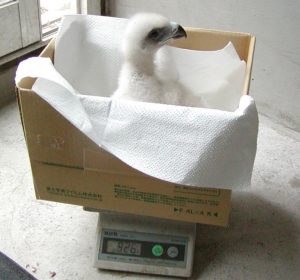
Fig.4 Weight measurement of secured second chick (2003)
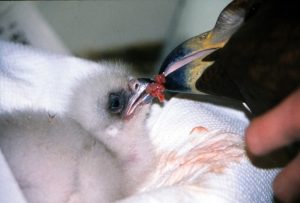
Fig.5 Feeding of chick using hand puppet
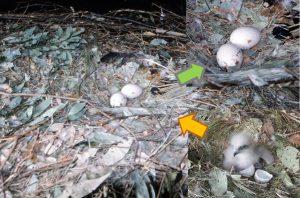
Fig.6 Attempt to collect unhatched eggs and replace them with a second chick and chicken eggshells
Future issues and prospects
The chick transfer project has concluded for the time being and has not subsequently been implemented, but in Heisei 21 (2009), the Ministry of the Environment formulated a basic policy for ex-situ conservation, in which the breeding populations of zoos were positioned as sites for ex-situ conservation, clarifying its supplementary roles for in-situ conservation, such as emergency evacuation, species conservation as a form of insurance, and accumulation of scientific knowledge.
Captive breeding has remained on track, but founder individuals for the breeding population need to be introduced to maintain a stable population and genetic diversity over long periods of time. It is considered that the introduction of eggs and chicks from the wild increases the genetic diversity of captive populations, and the transfer of eggs and chicks into the wild is an effective method for “reinforcing” wild introductions defined by the IUCN.
Recent accumulation of scientific knowledge has provided golden eagle feathers, skin tissue, and breeding-restricted eggs to research institutions such as universities. Such material has been used for research on primordial germ cells, subspecies identification using chromosomal analysis, and genetic diversity using DNA analysis, which has been applied toward the conservation of the Japanese golden eagle.

